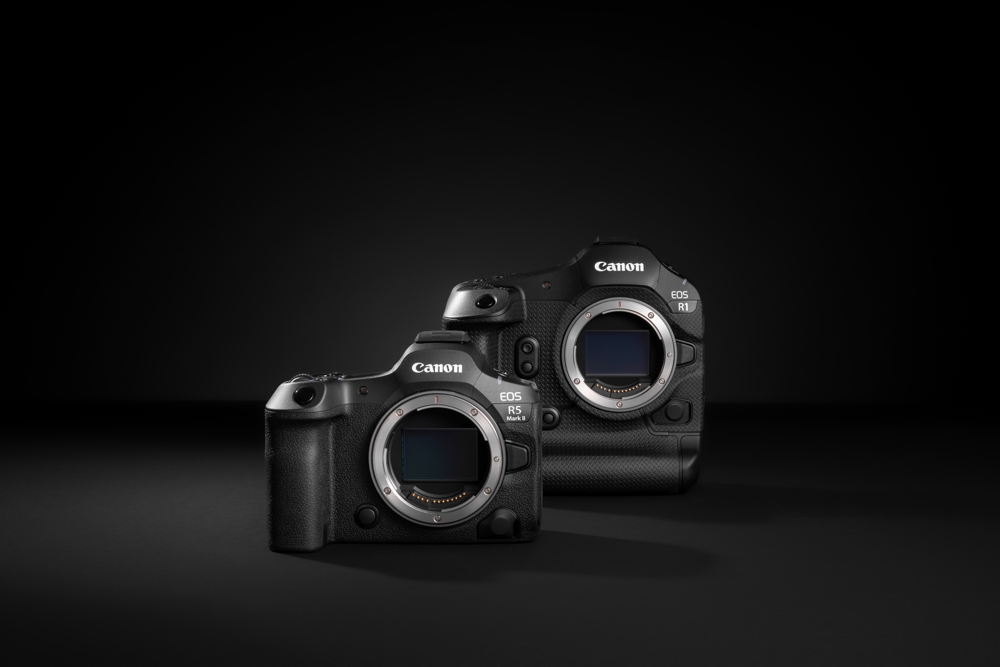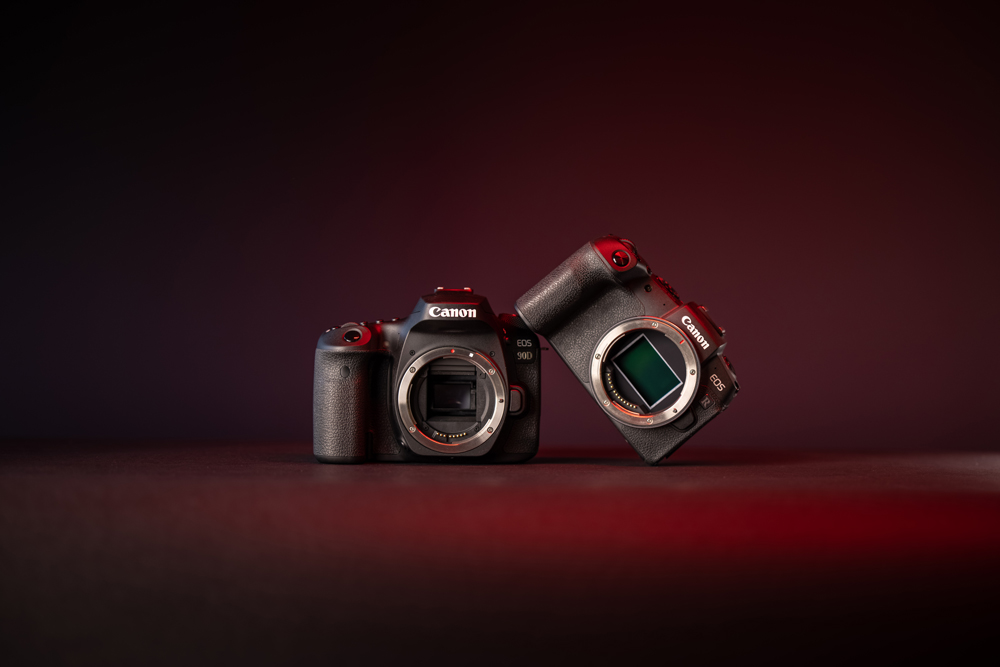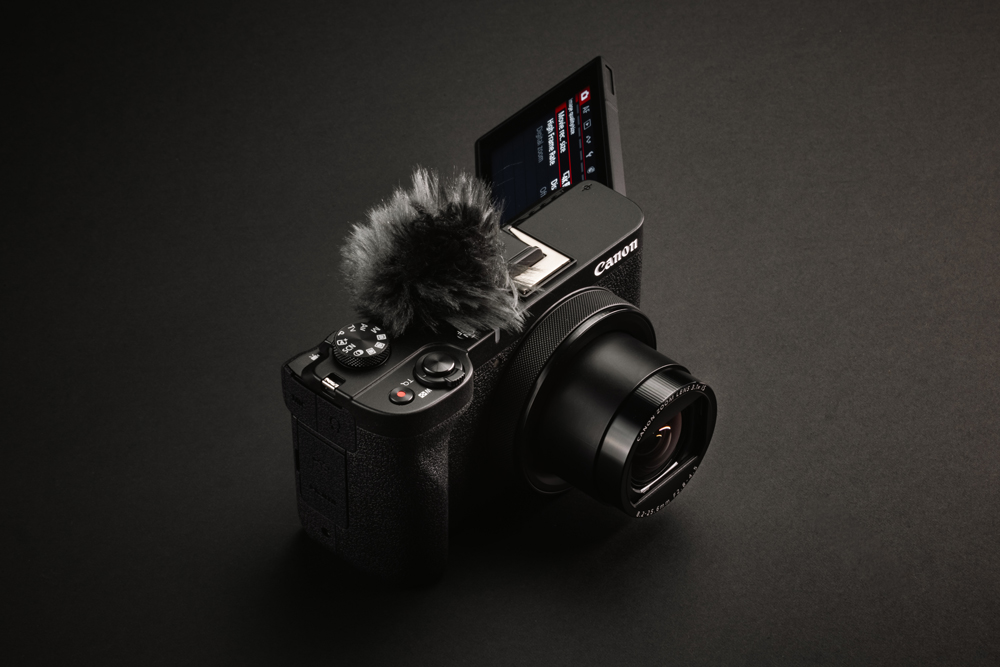- Canon EOS R vs. DSLR vs. PowerShot – Which Camera is Right for You?
-

Choosing the right Canon camera depends on your needs; whether you're a content creator, a traditional photographer, or just looking for a simple point-and-shoot. This guide breaks down the differences between EOS R mirrorless, DSLR, and PowerShot cameras to help you decide which one is best for you.

Best for: Content creators, hybrid shooters, travellers, and those wanting the latest technology.
Full Frame Sensor: Provides wider fields of view, shallower depth of field, and faster autofocus than APS-C sensors, ensuring exceptional image quality.
Compact & Lightweight: No mirror means a smaller, more portable design.
Advanced Autofocus: Features Dual Pixel CMOS AF for ultra-fast, accurate focusing, newer models now feature Dual Pixel CMOS AF II.
Superior Video Quality: Many models offer 4K and even 8K recording with enhanced stabilisation.
Electronic Viewfinder (EVF): See real-time exposure changes before taking the shot.
Silent Shooting Mode: Capture photos discreetly without a shutter sound—great for wildlife and event photography.
Powerful Low Light Performance: Exceptional focusing and clarity in dim lighting conditions.
USB-C Charging: Convenient on-the-go charging, perfect for travel.
Native RF Lens Compatibility: Supports Canon’s cutting-edge RF lenses, optimised for speed, sharpness, and customisation. EF and EF-S lenses can still be used with an adapter.
• Vloggers & YouTubers – Superior video quality with face-tracking autofocus.
• Travel & Street Photographers – Lightweight and ideal for shooting on the go.
• Hybrid Creators – Those who shoot both photos and videos frequently.
• Upgraders from DSLR – Wanting a modern, high-performance camera system.
• EOS R50 – Great for beginners and content creators.
• EOS R8 – Excellent for those upgrading from a DSLR.
• EOS R6 Mark II – A powerful choice for both photo and video enthusiasts.
• EOS R5 Mark II – A high-end model with 8K video and professional features.
Discover our full Mirrorless Range, or learn more if you need help choosing.

Best for: Traditional photographers who prefer an optical viewfinder and slightly longer battery life.
• Optical Viewfinder (OVF): Provides a natural, lag-free view of the scene.
• Long Battery Life: No electronic viewfinder means more shots per charge.
• Wide Lens Selection: Full frame DSLR works with EF & EF-S lenses, APS-C can use EF-S lenses.
• Great Image Quality: Larger sensors provide excellent detail and depth of field.
• EOS 1500D – Entry-level DSLR for beginners.
• EOS 90D – A versatile crop-sensor DSLR with 4K video.
• EOS 5D Mark IV – A full-frame DSLR popular with professionals.
Discover our range of DSLR cameras

Best for: Everyday users who want a simple, portable, all-in-one camera.
• Pocket-Sized & Lightweight: No need for extra lenses – perfect for travel.
• Point-and-Shoot Simplicity: Easy auto modes make photography effortless.
• Built-in Zoom Lenses: Great for capturing distant subjects without extra gear.
• Budget-Friendly: A cost-effective option for casual photography.
• Travellers & Casual Photographers – Ideal for those who want better quality than a smartphone.
• Families & Everyday Users – Easy to use with no manual settings required.
• Content Creators on a Budget – Some models include 4K video and flip screens.
• Videographers & Video Content Creators – lightweight and compact design ensures portability for on-the-go vlogging or discreet, high-quality recording.
• PowerShot G7 X Mark III – Popular among vloggers for its flip-up screen and 4K video.
• PowerShot V10 – Our smallest vlogging camera with a built-in stand and 4K video capability.
• PowerShot V1 – The ultimate compact camera featuring Canon Log 3 and extended 4K 60p recording of over 2 hours.
Discover our full range of PowerShot compact cameras
| Feature | EOS R (Mirrorless) | DSLR | PowerShot |
|---|---|---|---|
| Choose | You want the latest tech, superior autofocus, and excellent video quality. Ideal for content creators, hybrid shooters, and those upgrading from DSLRs. | You prefer an optical viewfinder, long battery life, and existing lens compatibility. Great for traditional photographers and event shooters. | You want a simple, portable camera with built-in zoom for video, travel and everyday use. |
| Size & Weight | Lightweight & Compact | Bulkier | Ultra-Portable |
| Lens Options | RF Lenses (New Tech) | EF & EF-S Lenses | Built-in Zoom |
| Autofocus | Fast, AI-powered | Slower in Live View | Basic |
| Viewfinder | Electronic (EVF) | Optical (OVF) | LCD Screen |
| Battery Life | Lower than DSLR | Longest | Varies |
| Video Capabilities | 4K/8K, Best for Video | 1080p-4K | 1080p-4K |

Professional lifestyle and wedding photographer Gemma Peanut pits the new Canon EOS 90D against the trusty 80D. Find out what she had to say here.

Sean Scott is one of Australia’s leading travel photographers, but how did he get started and what’s in his kit? Find out here.

Canon photographer Mark Clinton put his 5D Mark IV kit to the ultimate test when partnering with professional skiier, Fraser McDougall in New Zealand's Wanaka wilderness in a high-flying collaboration to get the shot. Watch the video here.